Swimming is a critical life skill for kids. The water might feel threatening for many children, especially beginners or those with special needs. Swimming helps here as well. Using the correct child swimming aid can help your child feel secure, safe, and ready to enjoy the water.
This guide will enable parents, caregivers, and swimming teachers to explore the best choices for child’s swimming aids, from conventional water wings to creative buoyancy aids. It will also advise selecting the ideal assistance and ensuring its use corresponds with swimming development and safety.
Why Should Young Children Use Swimming Aids?
Child’s swimming aids are vital equipment whether your child is learning to swim or being introduced to the water. They have many advantages, including:
- Buoyancy and Equilibrium: Floatation devices and other swimming aids assist children in maintaining adequate buoyancy, thus enabling them to experience swimming without concern about sinking.
- Development of Skills: These tools can support essential stroke learning and swimming styles.
- Confidence Building: A well-designed swimming aid can help a youngster gain confidence in water-based activities, enabling long-term enjoyment.
- Inclusiveness for Every Ability: Explicitly designed for autistic or challenged children, specially created swimming aids make sure every child can engage in swimming.
However, advantages also come with obligations. It’s essential to choose and apply swimming aids consciously.
Different Swimming Aids: Benefits and Drawbacks
Your child’s age, skills, and needs will determine the appropriate aid. Common child swimming aids are broken down here in a summary:
Here’s a more natural version of your text:
Arm Floats (Water Wings)
- Pros:
- Great for beginners
- Lightweight and easy to inflate
- Keeps arms buoyant during play
Cons:
- Provides minimal support for the rest of the body
- It may encourage incorrect body posture
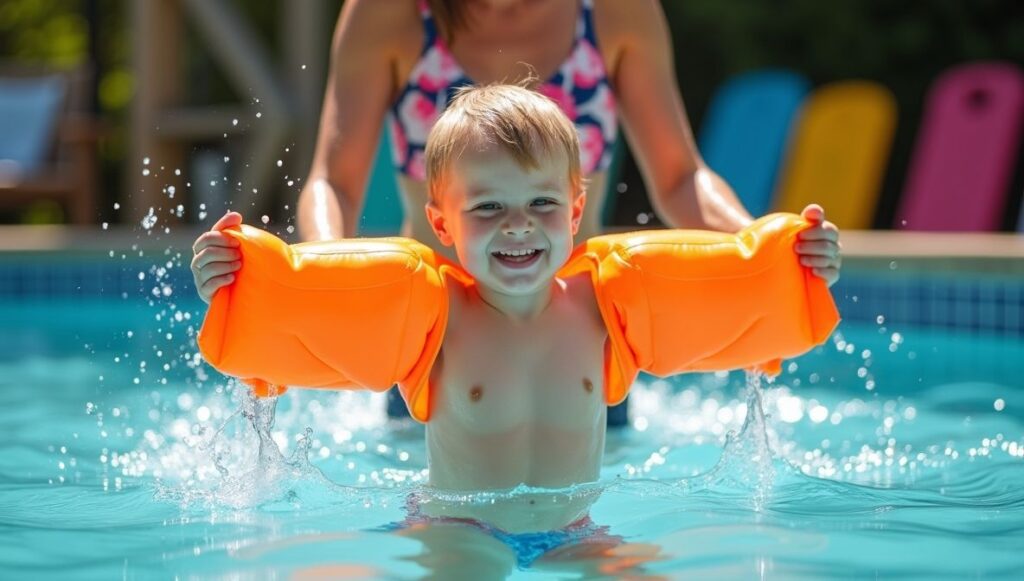
Kickboards
- Pros:
- It helps build leg strength
- Encourages proper kicking technique
- Ideal for older kids learning specific strokes
Cons:
- Not suitable for beginners who lack natural buoyancy
- Requires supervision
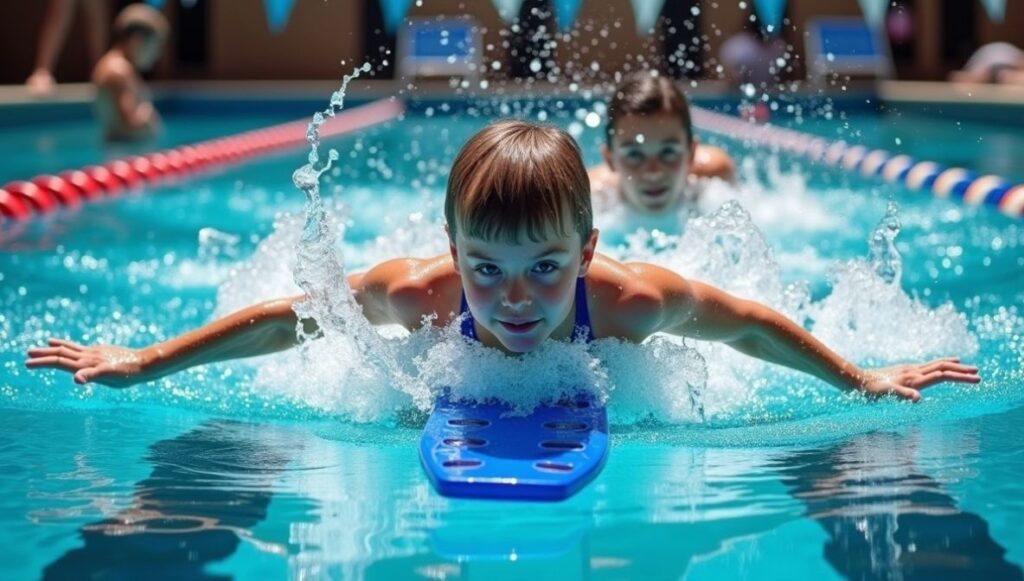
Swim Vests (Buoys)
- Pros:
- Provides full-body buoyancy
- Adjustable for comfort and fit
- Available in various designs, including options for therapeutic support
Cons:
- Can restrict arm movement for advanced swimmers
- It needs to be securely fastened for safety
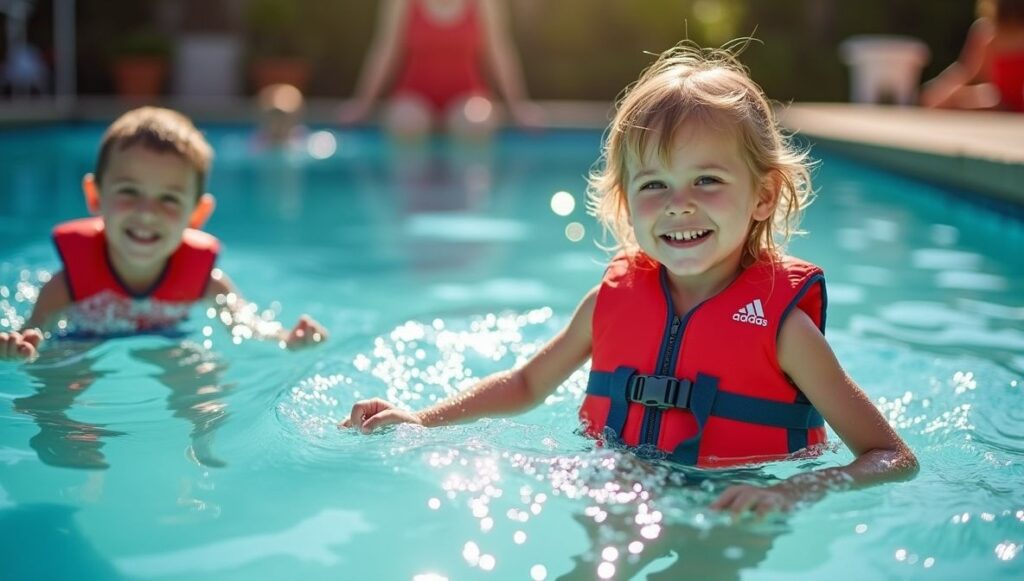
Pool Noodles
- Pros:
- Fun and versatile for creative water play
- Supports different body areas
- Affordable
Cons:
- Offers limited support for younger kids
- Lacks straps or harnesses, making it harder to maintain position
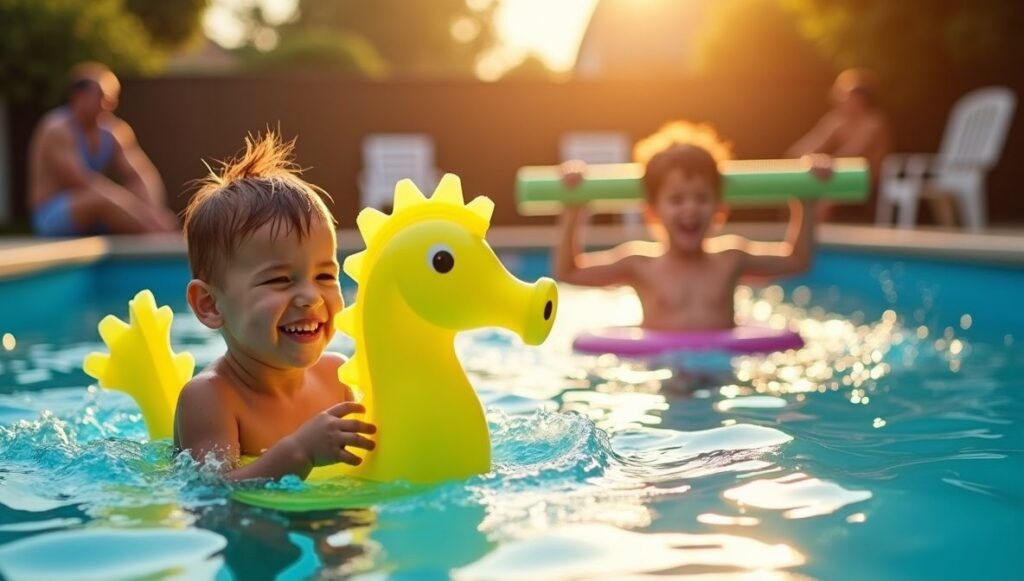
Swim Belts
- Pros:
- Supports the waist while allowing free arm movement
- Encourages independent swimming
- It helps build confidence in the water
Cons:
- It may not provide enough buoyancy for total beginners.
- This version removes AI-generated patterns while maintaining clarity and readability. Let me know if you’d like any further refinements!
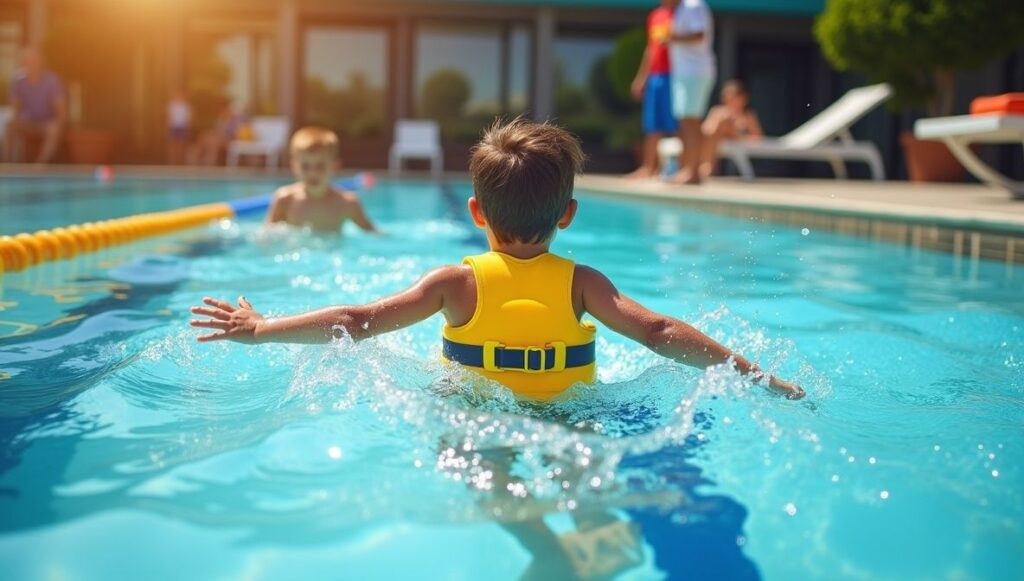
6. Specific Swimming Assistive Devices for Children with Disabilities
Children with cognitive, sensory, or mobility restrictions can benefit from sophisticated tools like inflated collars and specific harnesses.
Pros:
- Designed for readily available therapeutic swimming sessions
- Intended for several disabilities to provide extra support and comfort
Cons:
- It could cost more than more basic choices.
- Must be explicitly changed according to the demands of every child
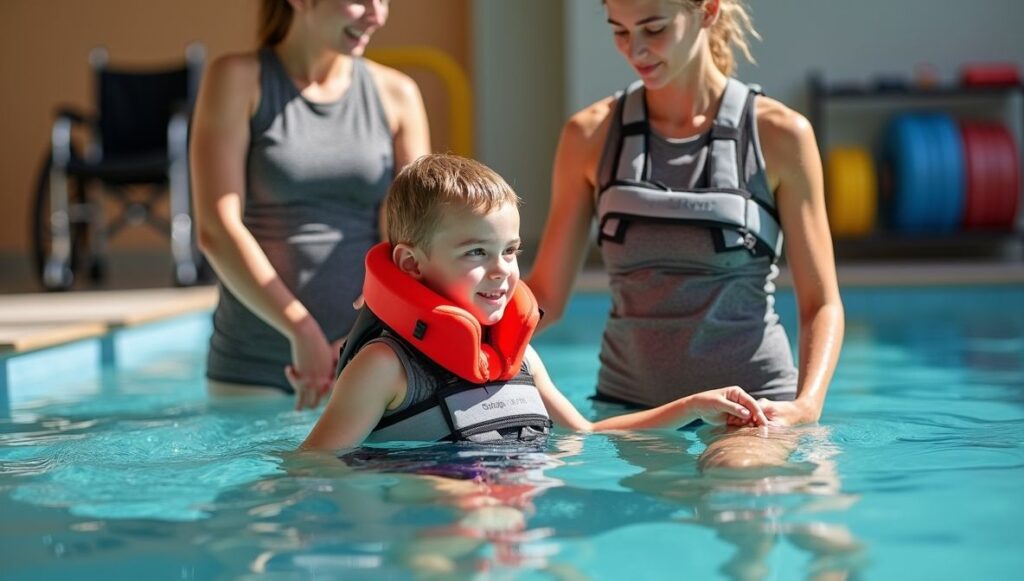
Important Safety Advice Using Swimming Aids
Though safety always comes first, swimming aids can boost water confidence. Use these essential rules to make sure your youngster enjoys and finds safety while swimming:
- Never Replace Supervision: Life-saving Devices are not swimming aids. Children should constantly be under adult supervision, whether near or in the water.
- Research Quality Standards: Select tools free of leaks or flaws and fit for safety certification.
- Stay Within Depth Limits: Even with buoyancy aids, make sure children stay in pools or other areas of water appropriate for their degree of ability.
- Ensure Proper Fit: Swim vests or belts should be tightly and comfortably fitting to prevent slipping or discomfort.
- Train Them Regarding the Device: Show your youngster how to properly use their swimming assistance and explain why it’s essential.
- Test New Aids in Shallow Water: Test new aids near the side of the pool to ensure efficacy before swimming.
How to Select the Appropriate Swimming Aid for Your Child
Choosing the best child swim assistance will rely on various elements. Here is how to choose wisely:
1. Think About Their Swimming Level
- Starting a novice, look for full-body help stressing core stability with swim jackets or arm floaties.
- Children learning to become competent in strokes and independence will find great tools in intermediate kickboards and swim belts.
- Advanced: Choose highly specialized tools for creative and strengthening exercises, such as pool noodles.
2. Think on scale and age
Sort the swimming props based on your child’s age and weight. Many goods list an age range or weight limit on the label, guaranteeing appropriate support.
3. Modifications for Special Needs
Look at companies providing adaptable solutions for specific mobility, cognitive support, and swimming aids for children with disabilities. Great disabled child swimming aids include adaptive vests and neck flotation collars.
4. Look for adjustable traits
Customize fit and comfort with adjustable straps, belts, or panels.
5. Counts of Durability
Check materials to be built to withstand water exposure over time without leaks or damage.
Promoting Safe and Fun Swimming Experiences
From increasing your child’s confidence to guiding proper swimming practices, child’s swimming aids have great benefits. Still, they only make one piece of the puzzle fit. Encouraging a fun but safe swimming session requires proactive monitoring, sufficient education, and selecting items for your child’s specific requirements.
Are you overwhelmed by choices? You don’t need to panic; we have your back. Review expert perspectives on websites our KidSportHub for guidance for young champions.

















